... and the Leopard.
This is a weekly blog of a journey I took to Tanzania and Dubai in November of 2010. I will usually post updates on Monday or Tuesday of a given week.
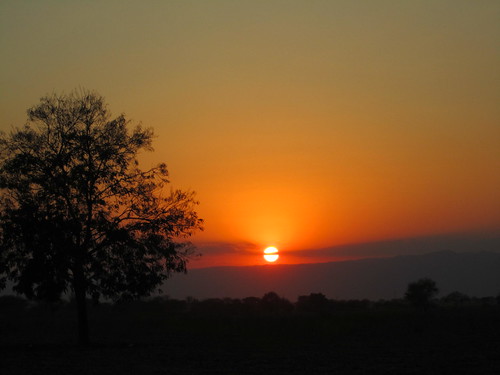
But first, shout outs to my fellow bloggers Sergey and Ginger. Sergey recently updated his blog with pictures from Tanzania, Kenya, and Ethiopia. And Ginger's blog is responsible for 99% of my referral traffic, so thanks Ginger! Back to the main event...

... one of the most frequent questions I get is "how was the Serengeti?" Well, we actually didn't go to the Serengeti. "Waaaaaah! How could you go to East Africa and not visit the Serengeti?" I am glad you asked. The reason we didn't visit the Serengeti had to do with Tanzanian weather patterns. Even in Africa, there are enormous temperature variations, mostly due to altitude. Simply put, the eastern coastal regions along the Indian Ocean are hot and humid (23 degrees Celsius), while the interior of the country, and particularly the northern portion, are on a plateau several thousand feet in altitude, and thus much more moderate (10 degrees Celsius). More importantly, however, even Africa has seasons, mostly having to do with the rains. Tanzania has four seasons:
- the long rains, or masika, from mid-March to mid-May;
- the long dry season from mid-May to early-November;
- the short rains, or mvuli, from early-November to late-December; and
- the short dry season from late-December to mid-March.

(Hattip to the Africa Foundation for this map)
... which is why we skipped the Serengeti. As you can see, at the time of year we were in Tanzania, all the animals were in the northern part of the park. And you remember what I said about the roads; paved roads end at Karatu. Accordingly, just to get to the southern part of the Serengeti takes half a day, and to drive across it to reach the animals at the northern border takes an additional full day. Sure, we could have just driven around the southern part of the Serengeti, but more than one tour operator likened it to a "desert" at this time of year, yellow, barren, and devoid of life. So, because we weren't willing to waste three days of our four day safari in transit just to see the Serengeti, we settled on the next best thing: Tarangire or the "Little Serengeti."


Fortunately for us, Tarangire behaves counter-cyclically from the Serengeti due to the presence of the Tarangire river. Specifically, because we were in Tanzania at the end of the long dry season, water in other parts of Tanzania were now scarce, and so the animals converged on the river at this time of year. Sweet.
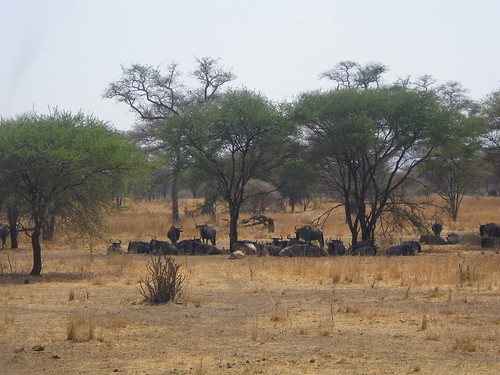
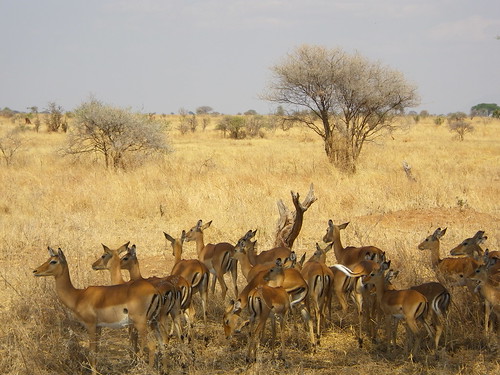


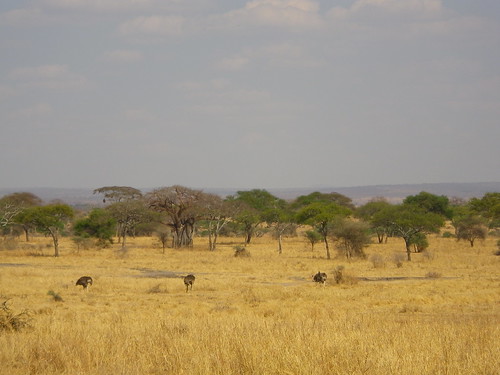
Now THIS is what I pictured the Serengeti as looking like with loads of wildebeests... and gazelles (a herd with one adult male leading females and kids)... and giraffes... and zebras... and ostriches (ostrichi?).
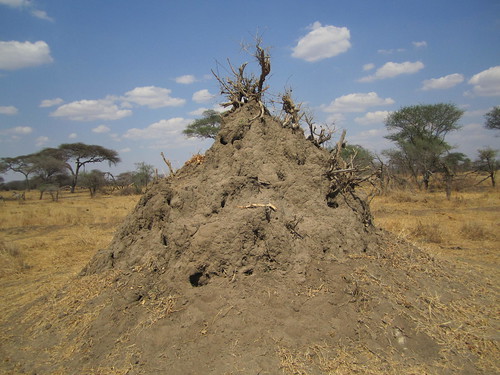
This anthill, yes an anthill, was more of a surprise, however. Or maybe it was termites?
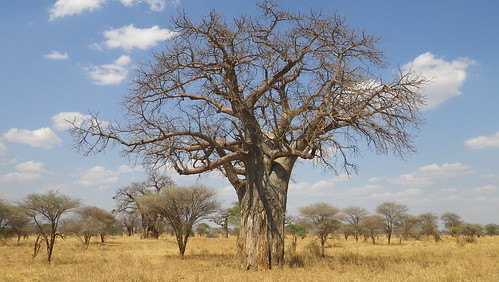
Tarangire is filled with these awesome Baobab trees, which are important to life in East Africa, primarily water storage during the dry seasons. One of the most entertaining things we saw in Tarangire was these huge elephants beat the crap out of these trees looking for water and salt. You could hear the elephants from far away as they pried off the bark.

This is what it looks like when multiple elephants have had their way with a particular tree.
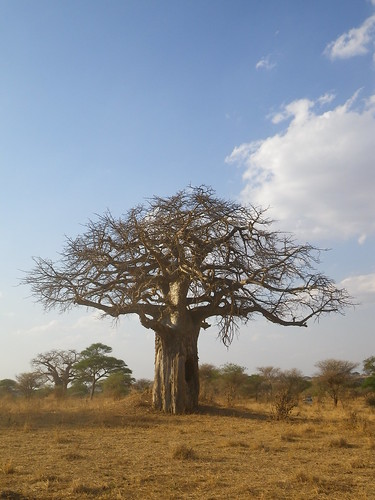
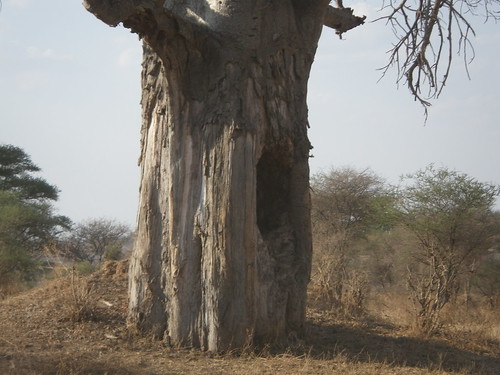
What was more sobering was to see these hollowed out Baobab trees. David said they were used by poachers as they waited for big game. In a bit of turnabout, however, they were later used by rangers to flush out poachers.
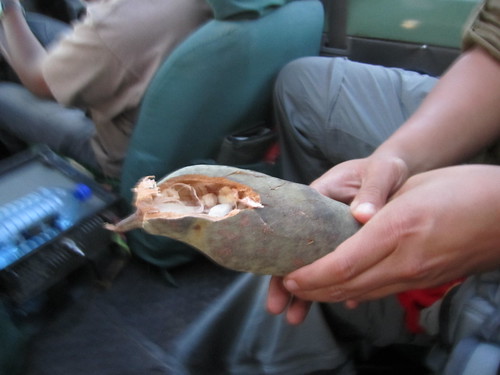
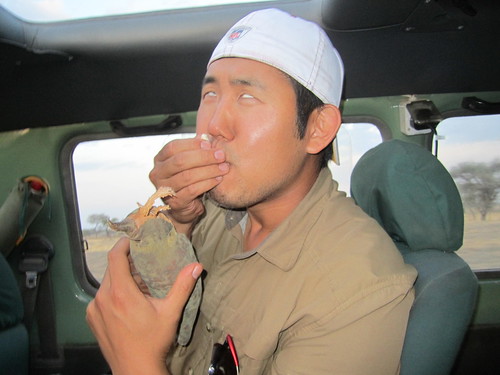
The Baobab tree is also known for this "fruit." David bought it for us from a kid selling it on our way out of the park for 1,100 shillings, or about 70 cents. The shell looks like a large sweet potato and has the feel of tree bark. Even though it is thin, it is pretty tough, however, as David had to beat it against the side of the car a few times before it cracked open. Inside are dozens of little rocks that I can only describe as looking like crack cocaine, with a chalky exterior. They are extremely sour and have a stringy pit in the middle. I kind of liked them, while Resha and William did not.
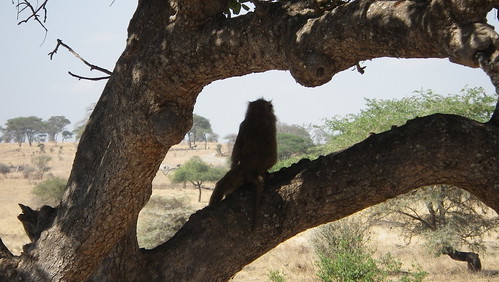
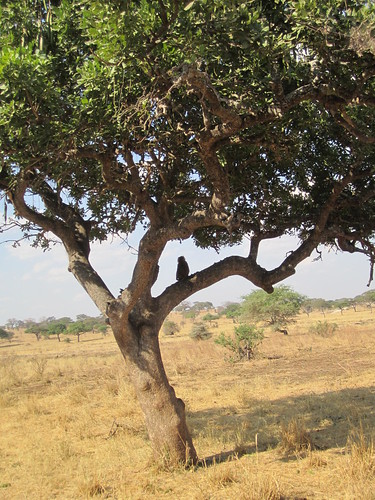
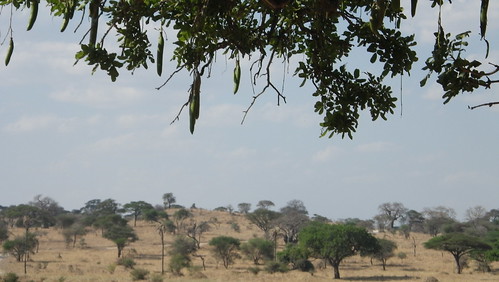
This monkey is hanging out in a "sausage" tree. David said, however, that the "sausages" were poisonous, and for that reason, tribesmen used to meet under these trees because the more predatory animals wouldn't go near them and thus the trees are considered good luck.

Our first view of the "mighty" Tarangire. As you can see, the long dry season has taken its toll.
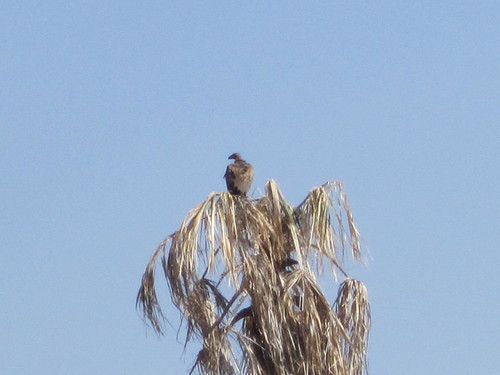


A vulture, waiting for some pick'ins.
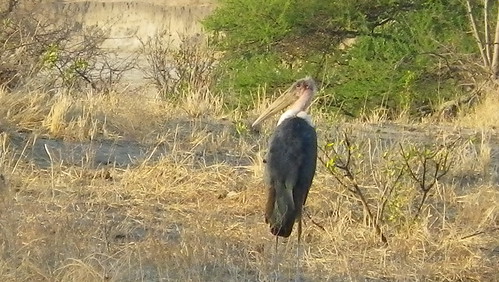
This crane (national bird of Tanzania) was also pretty cool.
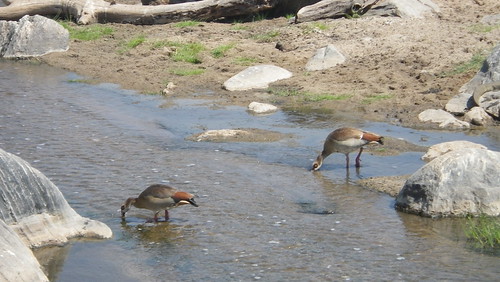
Duck, duck... duck?

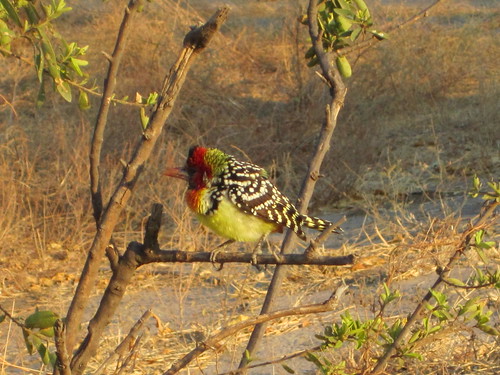
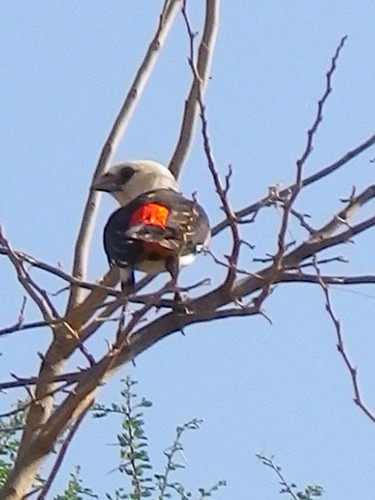
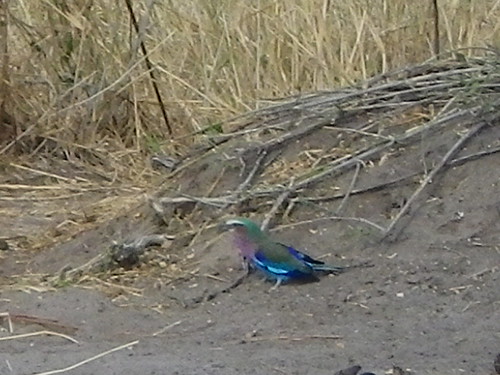
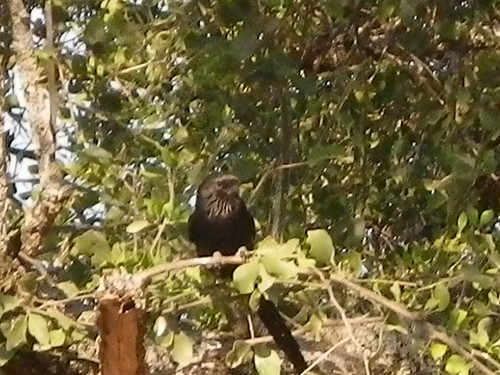
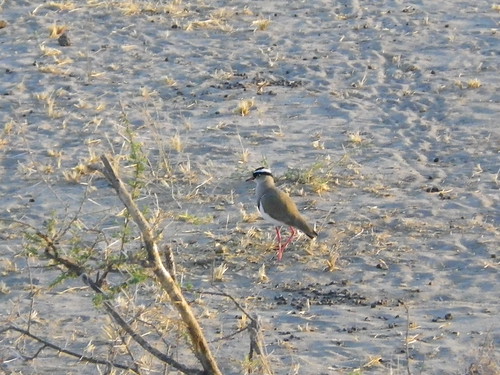
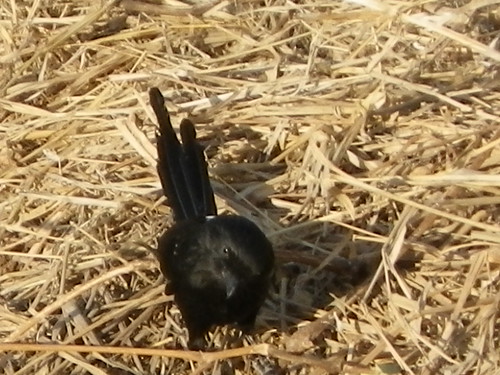
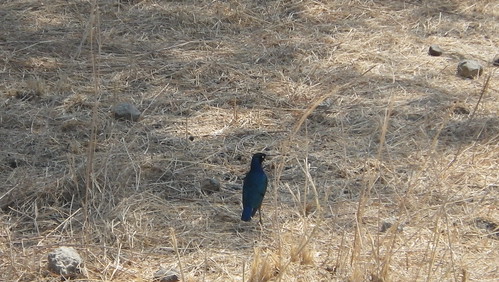
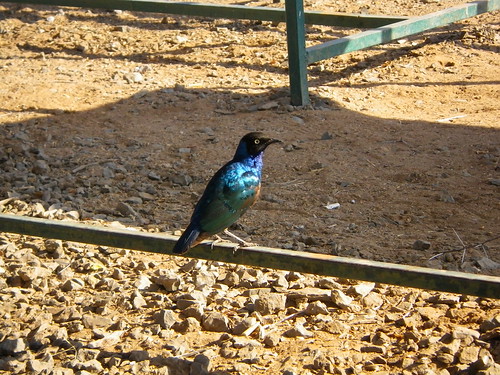
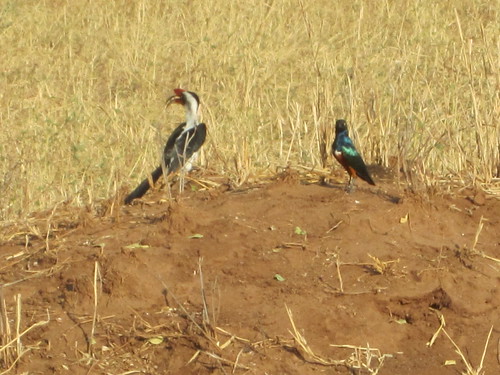
Other cool birds. The colorful one on the right of the bottom photo (the same bird is also in the two photos above it) is particularly impressive.
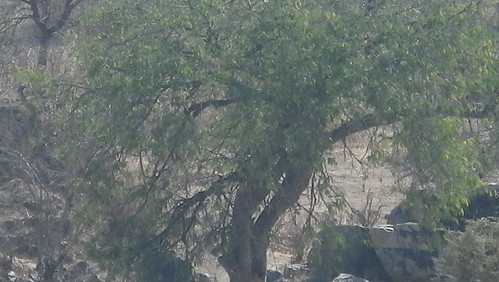
Which brings us to the leopard. So, you will recall that we were behind a Leopard Tour vehicle in Ngorongoro when we met Charles the Lion(hearted). Well, in Tarangire, the Leopard Tour vehicle apparently cloned itself, because they were freaking all over the place. Some of them were stopped on a small bridge over the river, and the driver said there was a leopard in the tree above. So, we sat there for a good 30 minutes trying to look for it. Supposedly it is in that thick portion in the middle of the tree, but darned if I can see it.
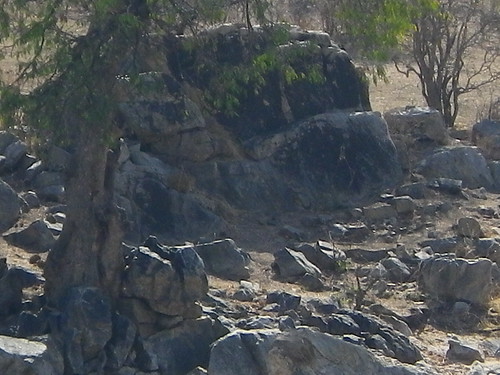
We came back later, and this time, another Leopard Tour vehicle's driver said it was hiding in the rocks after having dragged a small antelope to eat. Well, we kind of caught view of some of the dead antelope, but still no leopard after yet another 30 minutes.

We came back to the bridge the day after to, once again, see if we could spot the leopard, and the best we could get was this thick branch on the tree that could possibly be a leopard if you squinted real hard and tilted your head to the side.

Basically, at that point we decided we hated the leopard, and by extension, Leopard Tours. A pox on all their houses!


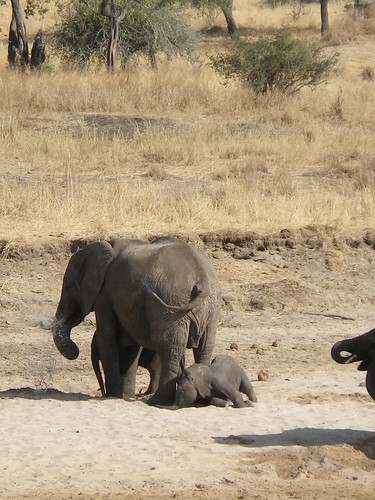
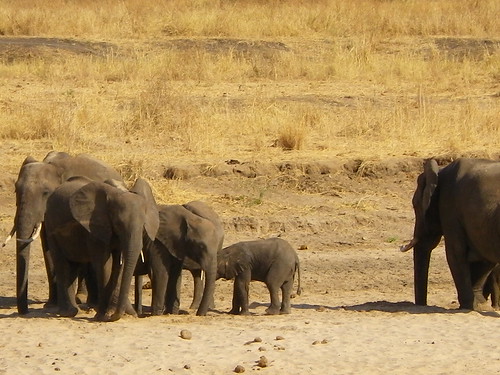

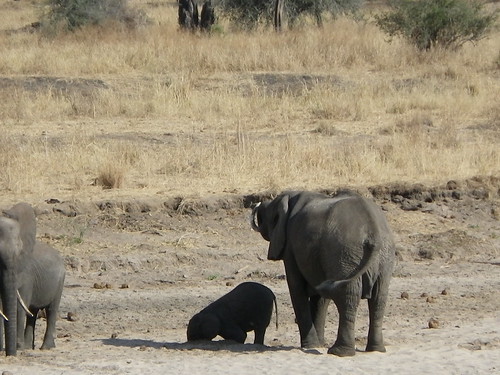
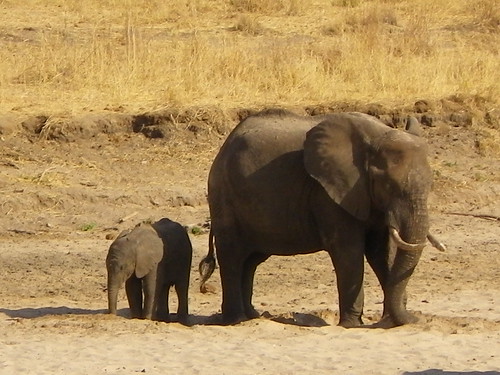
I'm actually going to be in the motherland (Korea) for the next week, so the next post will be two weeks from now. Until then...
And how do you know what crack looks like, Mr. Kim?
ReplyDelete